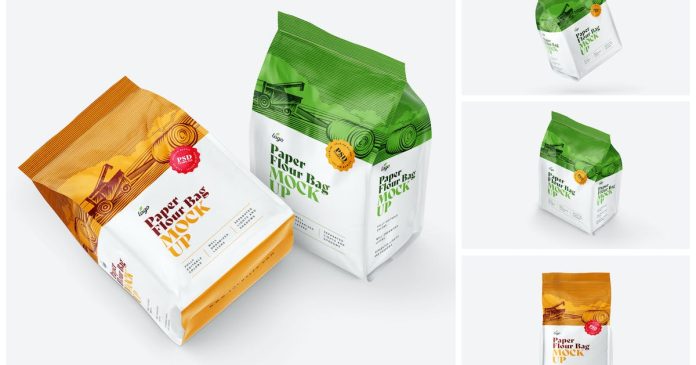In the dynamic world of retail, packaging plays a pivotal role in catching the consumer’s eye and driving purchasing decisions. Mylar packaging, with its distinctive shine and durability, has become a popular choice for various products. In this comprehensive guide, we will delve into the intricate journey from the initial concept to the moment a product adorned with eye-catching Mylar packaging graces the store shelf.
The Shining Star of Packaging Materials
Before we explore the design process, let’s unravel the essence of Mylar. Mylar is a brand name for a type of polyester film known for its exceptional strength, flexibility, and high tensile strength. Developed by DuPont in the 1950s, Mylar has since found applications in a wide array of industries, including packaging.
The Foundation: Conceptualizing the Design
The design journey commences with a vision – a concept that encapsulates the essence of the product and its brand. Whether it’s a snack, a cosmetic product, or electronics, the packaging must convey the right message. Designers delve into market research, brand identity, and target audience analysis to craft a concept that resonates with consumers.
Translating Ideas into Sketches: The Initial Design Phase
With the concept in hand, designers move to sketching. This phase involves transforming abstract ideas into tangible representations. Sketches act as the blueprint for the packaging design, outlining the structure, dimensions, and visual elements. Mylar’s reflective surface becomes a canvas for creativity, allowing designers to play with light, color, and texture.
Digital Realization: Bringing Designs to Life
In the digital era, the transition from sketches to digital renderings is a crucial step. Design software like Adobe Illustrator or 3D modeling tools enables designers to create detailed and realistic representations of the Mylar packaging. This stage allows for a meticulous review of the design, ensuring it aligns with the brand’s identity and meets practical considerations.
Material Selection: Why Mylar Matters
Choosing the right packaging material is pivotal, and Mylar stands out for several reasons. Its reflective surface enhances the visual appeal, making colors pop and graphics vibrant. Additionally, Mylar’s durability ensures the product remains intact during transit and on the shelf. Sustainability is another key factor, as Mylar is recyclable, contributing to environmentally conscious packaging practices.
The Role of Printing: Adding Depth and Detail
Achieving optimal results when printing on Mylar necessitates precision and expertise. The reflective nature of the material demands careful consideration of ink types and advanced printing techniques. When partnering with a reputable mylar bag manufacturer, whether it’s vibrant product images or intricate brand logos, the printing process is where the design truly comes to life. High-quality printing ensures that the Mylar packaging not only captures attention but also effectively communicates the brand’s message to the target audience.

Form Follows Function: Structural Design
The structural design of Mylar packaging goes beyond aesthetics; it must align with the functional requirements of the product. The packaging should provide protection, facilitate easy access, and contribute to the overall user experience. Designers work closely with structural engineers to ensure that the Mylar packaging not only looks good but also serves its practical purpose.
Incorporating Innovation: Interactive Packaging
As technology continues to advance, packaging design has embraced innovation. Mylar, with its versatility, serves as an excellent canvas for interactive packaging elements. QR codes, augmented reality features, or even simple tear-off coupons can be seamlessly integrated into Mylar packaging, engaging consumers and adding an extra layer of value.
Quality Control: Ensuring Excellence
Before the Mylar-clad product hits the shelves, rigorous quality control measures are in place. This involves physical prototypes, color accuracy checks, and stress tests to assess the durability of the packaging. Mylar’s ability to withstand various environmental conditions makes it a reliable choice for ensuring the product reaches the consumer in pristine condition.
The Environmental Aspect: Mylar and Sustainability
In an era where sustainability is a buzzword, Mylar stands out as a packaging material with eco-friendly attributes. Its recyclability reduces the environmental impact, aligning with consumer preferences for sustainable choices. Companies embracing Mylar packaging send a clear message of commitment to both product quality and environmental responsibility.
On the Shelf: Impact and Consumer Response
The ultimate test for any packaging design is its impact on the consumer. Mylar packaging, with its reflective surface and eye-catching visuals, has the power to stand out amidst a sea of competing products. Consumer response, influenced by factors such as shelf placement, product positioning, and overall packaging aesthetics, determines the success of the design in the retail environment.
Conclusion: Mylar’s Journey from Concept to Shelf
In conclusion, the design process of Mylar packaging is a meticulous journey that combines creativity, technology, and functionality. From the initial concept to the shelf-ready product, each phase plays a crucial role in ensuring the packaging not only looks appealing but also serves its practical purposes. Mylar, with its unique properties, has emerged as a star in the packaging realm, contributing to the success of products across diverse industries. As consumer expectations evolve, the role of Mylar packaging continues to shine, promising a future where both design and sustainability harmoniously coexist on the retail shelf.

